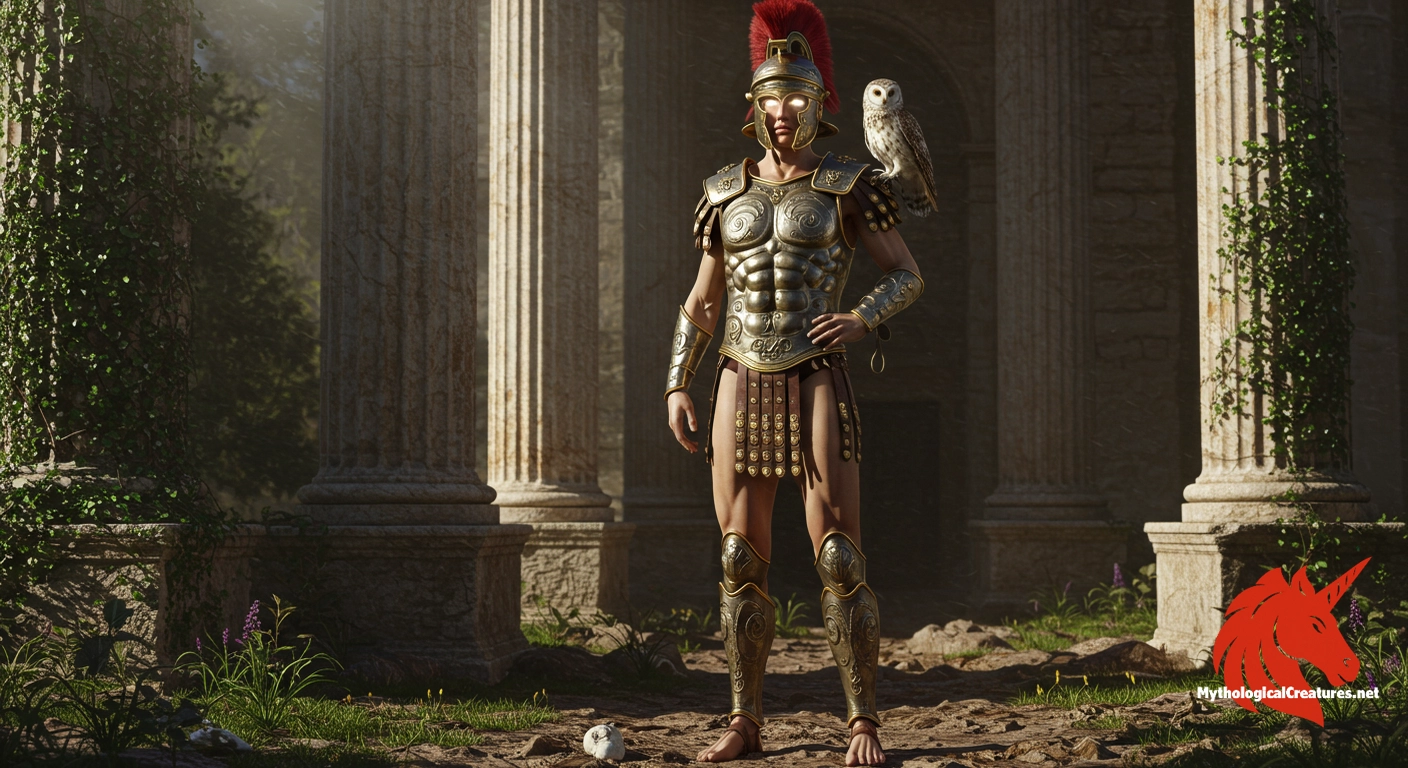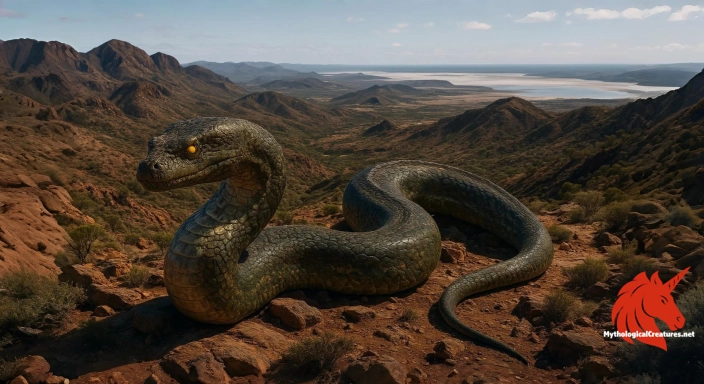Minerva: Minerva is the Roman goddess of wisdom, justice, and strategic warfare, revered as an immortal virgin deity.

Minerva
Minerva - Central figure in the Roman Capitoline Triad, embodying the essence of wisdom, strategic warfare, and cultural arts
Origins & First Encounters
Minerva stands as a luminous emblem of Roman culture, embodying wisdom, justice, and strategic warfare in a singular, resplendent figure. Her origins intertwine with early Etruscan traditions where she was revered as Menrva, a precursor to the intricate persona that would later be celebrated in Roman lore. She emerged as a divine force whose intellectual brilliance and martial skill set her apart from other deities. The goddess was nurtured in a milieu that prized civic order as much as military prowess, a duality that defined her every aspect. Her narrative quickly became interwoven with Rome’s identity, symbolising the power of reason combined with the art of strategy. As a virgin deity, her purity and dedication lent authority to the realms of arts, commerce, and crafts. Being an integral member of the Capitoline Triad alongside Jupiter and Juno further cemented her role as a cornerstone of Roman religious tradition. Her rich heritage and multifaceted influence have made her a timeless figure, bridging the realms of intellectual achievement and martial discipline.
Source Texts & Tale Variants
The primary sources that celebrate Minerva are diverse, ranging from ancient religious texts to monumental architectural dedications throughout Rome. Her tale has been etched in poetic verses, inscriptions and literary works penned by both historians and philosophers. Artefacts such as temple reliefs and statues have provided a visual catalogue that underscores her importance in the public and private spheres of Roman life. The narratives surrounding her character are captured not only in formal treatises but also in the subtle nuances of folklore passed down through generations. Multiple literary traditions record story variants where her strategic acumen and inviolable integrity shine as central themes. Diverse accounts often reflect local community practices, with some emphasising her legislative guidance while others highlight her martial expertise. This blend of texts and physical relics forms a complex palette of stories that continue to inspire theological and cultural studies. Even within the scattered margins of these ancient sources, there is a consistent thread that reveals a goddess whose influence spans both the battlefield and the realm of intellect.
Form & Powers
Minerva is envisaged as a towering figure whose physical presence demands both respect and admiration. She is classically depicted with an athletic build that intertwines the grace of intellect with the power of a seasoned warrior. Her image frequently features detailed armour, each piece intricately worked to symbolise the discipline and order she champions. An ever-present spear and shield accentuate her status as a goddess of strategic warfare, blending beauty with martial precision. The owl, often portrayed perched near her shoulder, further accentuates her association with perceptive wisdom and timeless knowledge. Her visage, composed and resolute, often reflects an inner strength that commands both fear and reverence. Variations of her iconography sometimes include softer elements such as flowing robes beneath her armour, hinting at her role as a patroness of arts and crafts. Sculptors and painters alike have captured her dynamic balance between physical robustness and serene intellect, resulting in depictions that are as much works of art as they are symbols of martial verity.
Regional Faces
The portrayal of Minerva has experienced dynamic regional adaptations that reveal the flexibility of her myth within various cultural frameworks. In Rome, she is predominantly celebrated as a deity of wisdom and statecraft, her image carefully cultivated to reflect the ideals of civic responsibility and military strategy. Beyond the Italian peninsula, echoes of her persona can be detected in regions where the influence of Hellenistic tradition fused with local beliefs, leading to an overlap with the Greek Athena. In these territories, her iconography acquired embellishments that often stressed her role in the arts and sciences alongside her martial attributes. Smaller communities integrated local symbols and narratives into her character, resulting in a myriad of versions that ranged from a nurturing progenitor of crafts to a vigilant guardian of law and order. These regional interpretations often contained subtle shifts in iconography, such as the inclusion of distinct local flora or artifacts that enhanced her symbolic significance. This cultural interplay allowed Minerva to become both a unifying figure and a mirror reflecting regional particularities. Her myth, thus, serves as a testament to the enduring adaptability of ancient deities across time and space.
Cultural Parallels
Minerva’s resonance extends well beyond the confines of Roman myth, finding striking parallels in other ancient traditions that revered the union of intellect and strength. Her closest counterpart is undoubtedly the Greek Athena, whose attributes mirror Minerva’s blend of warfare and wisdom, yet each carries unique nuances shaped by their respective cultures. While both deities champion the cause of rational warfare, Minerva is also celebrated for her oversight of law, trade, and civic order, setting her apart as a more multifaceted guardian of society. Similar figures in other mythologies, such as certain aspects of the Norse warrior goddesses, also embody the conflict between beauty and battle, even though their cults emphasize different aspects of governance and fertility. The recurring motif of the owl in the iconography of these deities reinforces a pan-mediterranean admiration for wisdom and vigilance. Each comparative narrative enriches our understanding of how ancient societies viewed the balance between physical might and intellectual integrity. These comparative elements not only reinforce Minerva’s singular importance but also illustrate a shared cultural motif of the rational warrior across diverse traditions. By drawing comparisons with related figures, one gains insight into the universal human esteem for leadership that is both judicious and decisive.
Legacy & Modern Evolution
The legacy of Minerva is as enduring as it is transformative, having gracefully traversed the boundaries of ancient myth into the modern cultural imagination. Over centuries, her depictions evolved from stern martial imagery to more nuanced representations that symbolise enlightenment and scholarly pursuit. Her essence inspired the Renaissance, when artists and thinkers alike embraced her as an icon of creativity, intellectual rigour, and artistic splendour. The goddess not only influenced the realm of art but also found a place in civic iconography, where institutions of learning and justice invoked her presence as a guiding light. Modern reinterpretations often cast her as a beacon of empowerment, advocating for the virtues of rationality and ethical governance. Contemporary literature and visual arts continue to draw upon her myth, blending ancient symbolism with current narratives of progress and social responsibility. Her enduring association with the owl serves as a timeless emblem of insight, vigilance, and the ceaseless pursuit of wisdom. As her legacy becomes interwoven with modern ideals, Minerva remains a multifaceted icon whose symbolic reach extends from the marble temples of antiquity to the dynamic arenas of modern thought.
Interesting Fact
An interesting aspect of Minerva is her unique combination of martial and intellectual prowess, demonstrating that the pursuit of wisdom and the art of war can coexist harmoniously.
Quick Creature Info
Origin:
Associations:
Our Mythic Legendary Rating:

Also Sometimes Known As:
Habitat:
Supernatural Powers:
Physical Attributes:
Abilities:
Behavior:
Lore:
Related Creatures, Tales or Lore
References
Discover Another Mythical Legend You May Not Have Heard Of?
Uncover the mysteries of ancient folklore and expand your knowledge of legendary beings from cultures around the world.
Dare to Meet the Arkaroo....
Mythical Disclaimer: The images and data on this site are derived from various historical and literary sources, but we have found that many myths often have multiple versions and interpretations across references, sometimes contradictory. As a result, these creature depictions are artistic interpretations—imaginative blends of folklore, legend, and a dash of AI guesswork. Because creature descriptions vary widely, our illustrations and accompanying information represent our best effort to honor mythology while bridging creative gaps. Enjoy these interpretations—just remember, we've done our best to respect the stories and validate available data, but in the realm of mythology, details often shift, imagination leads the way, and nothing is ever set in stone!
Curated by the Mythological Creatures Team (rev. May 2025)
